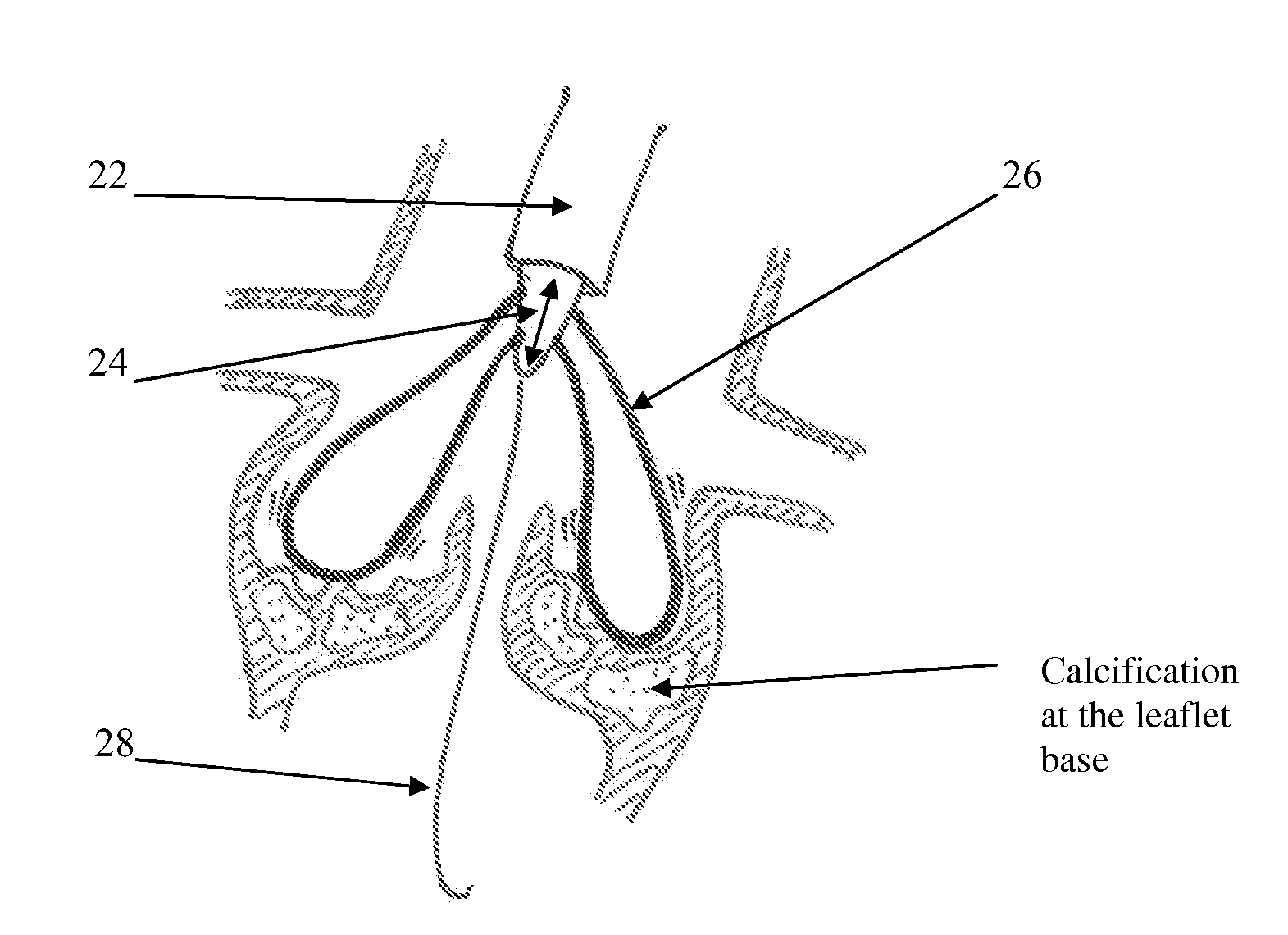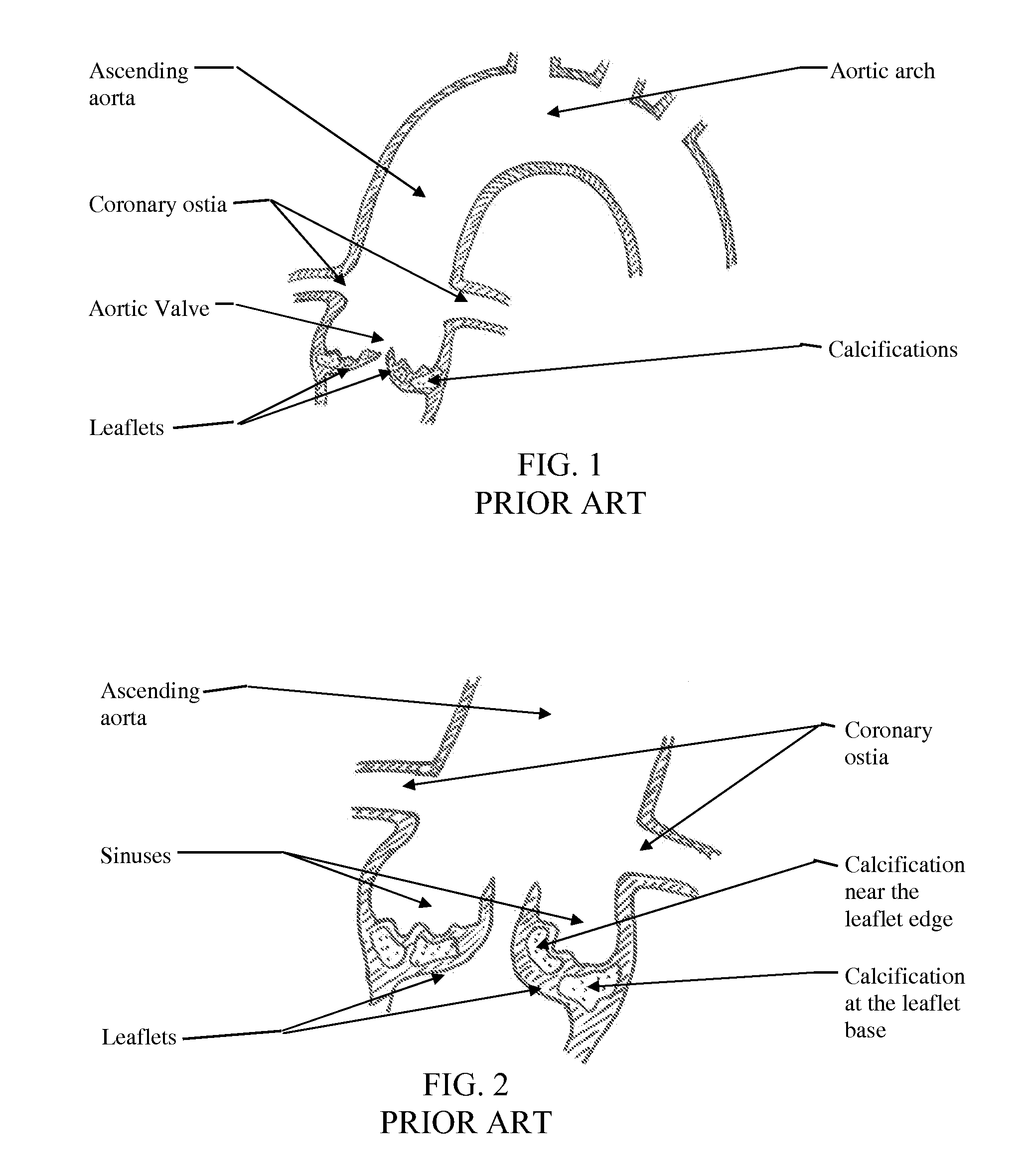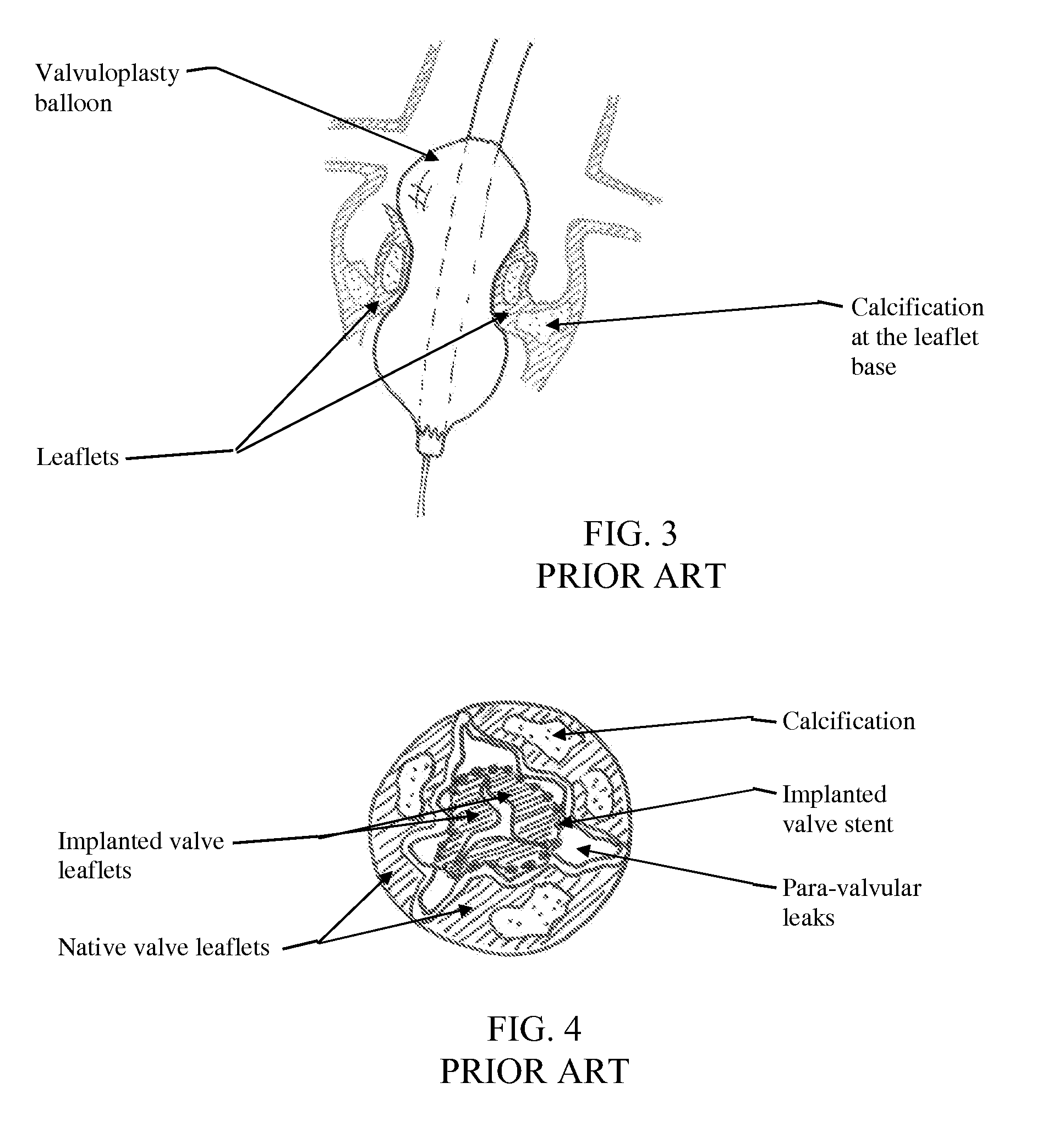Fracturing calcifications in heart valves
a technology of calcification and heart valve, which is applied in the field of percutaneous devices and methods for fracturing calcification in heart valves, can solve the problems of limited effectiveness and durability, limited leaflet mobility, and limited stretching effect, so as to increase the cross-sectional area of implanted valves, increase leaflet pliability and mobility, and increase the cross-sectional area of open valves.
- Summary
- Abstract
- Description
- Claims
- Application Information
AI Technical Summary
Benefits of technology
Problems solved by technology
Method used
Image
Examples
Embodiment Construction
[0059]Reference is now made to FIG. 5, which illustrates a percutaneous device 10 for fracturing calcifications in heart valves, in accordance with a non-limiting embodiment of the present invention. Device 10 is a catheter-based impactor device (impactor catheter) that includes an external housing 12 (shaped as a shaft, and also referred to as shaft 12) in which is housed, and from which is deployed, an impact-producing element 14. Impact-producing element 14 creates a mechanical impact when brought into contact with hard tissue. The mechanical impact is created by a rapid back and forth vibratory motion of the impact-producing element 14. The amplitude of this vibratory motion may be small (typically from less than a millimeter and up to a few millimeters), but the velocity of the impact-producing element 14 when moving in the forward direction is relatively high. Such rapid forward motion makes the impact-producing element 14 very effective in fracturing hard tissue, such as valv...
PUM
 Login to View More
Login to View More Abstract
Description
Claims
Application Information
 Login to View More
Login to View More - R&D
- Intellectual Property
- Life Sciences
- Materials
- Tech Scout
- Unparalleled Data Quality
- Higher Quality Content
- 60% Fewer Hallucinations
Browse by: Latest US Patents, China's latest patents, Technical Efficacy Thesaurus, Application Domain, Technology Topic, Popular Technical Reports.
© 2025 PatSnap. All rights reserved.Legal|Privacy policy|Modern Slavery Act Transparency Statement|Sitemap|About US| Contact US: help@patsnap.com



